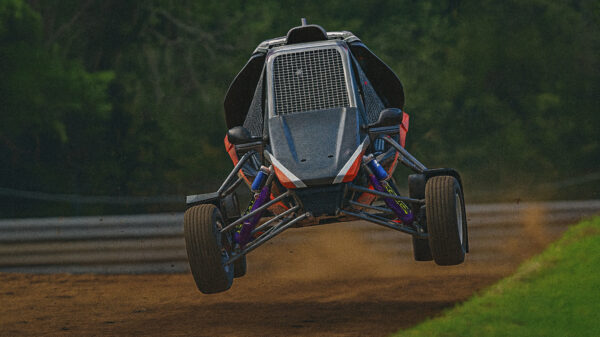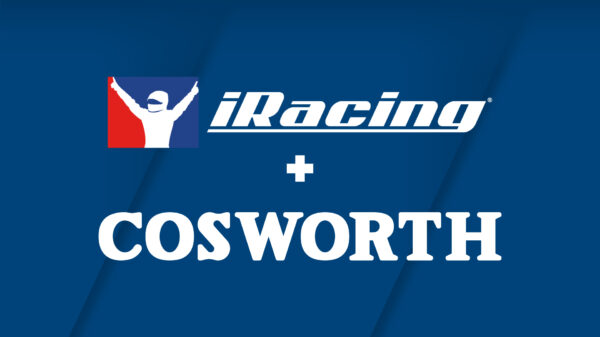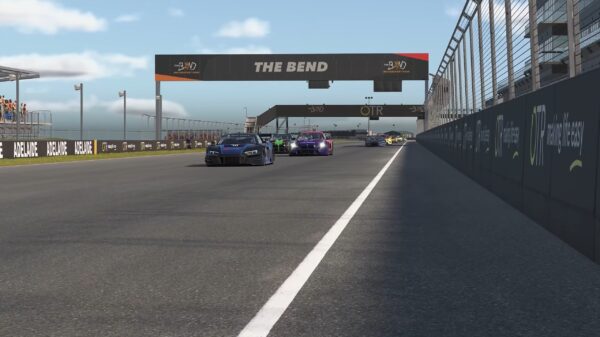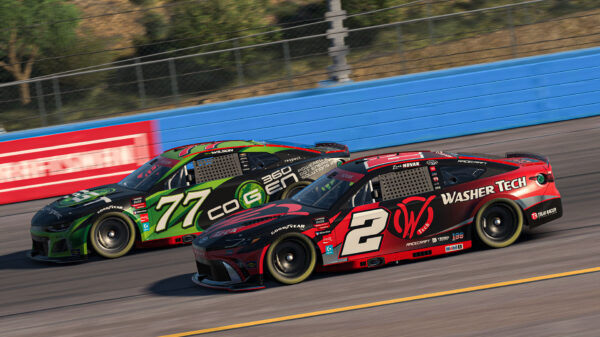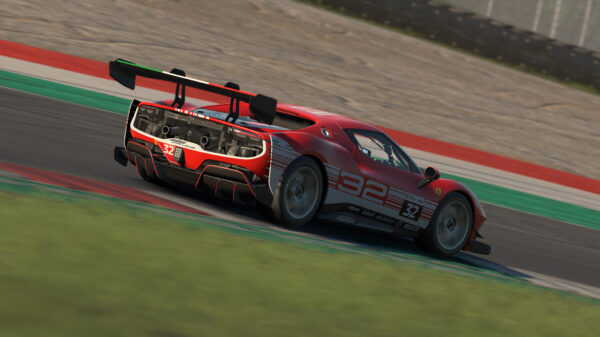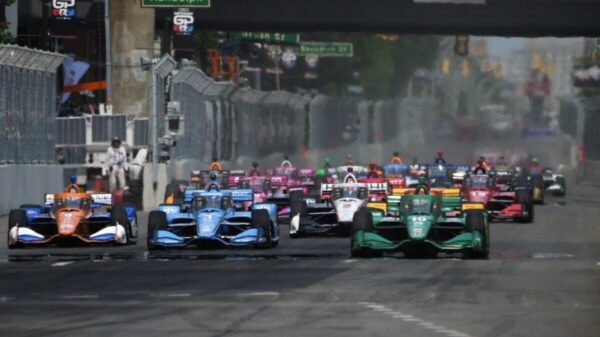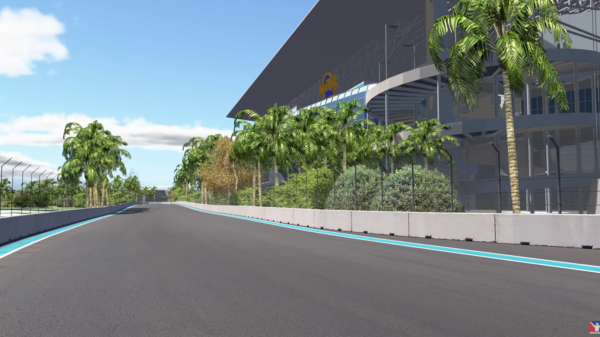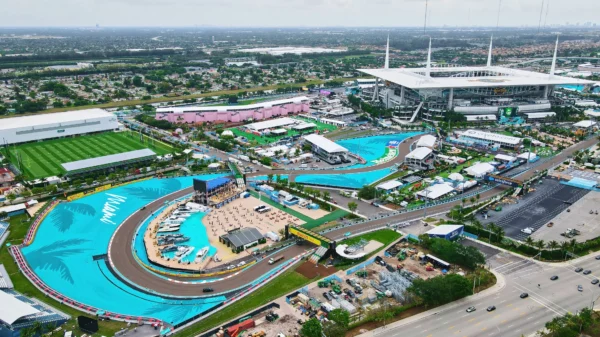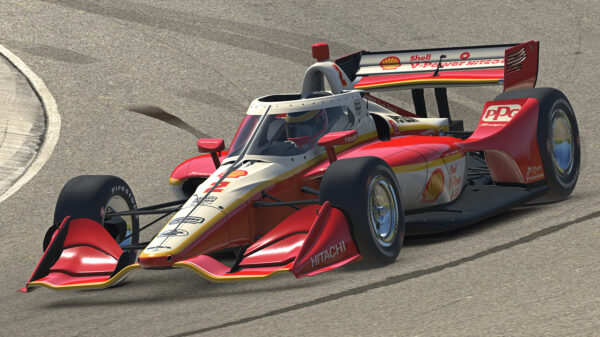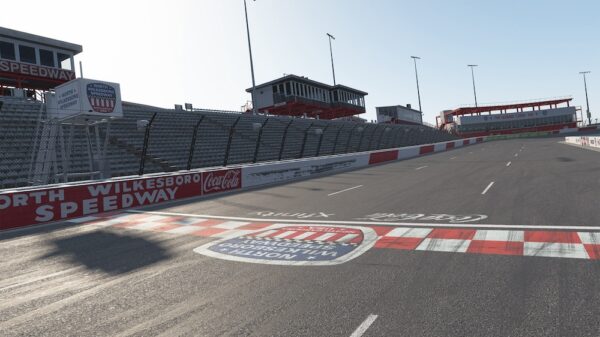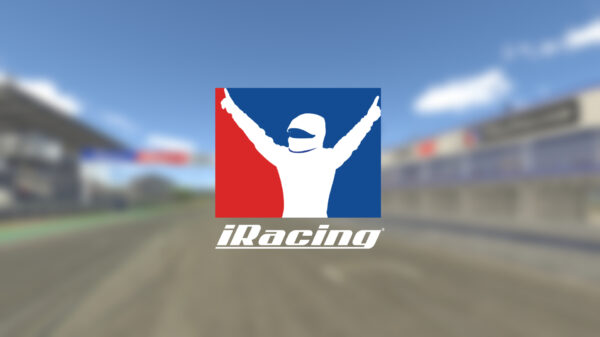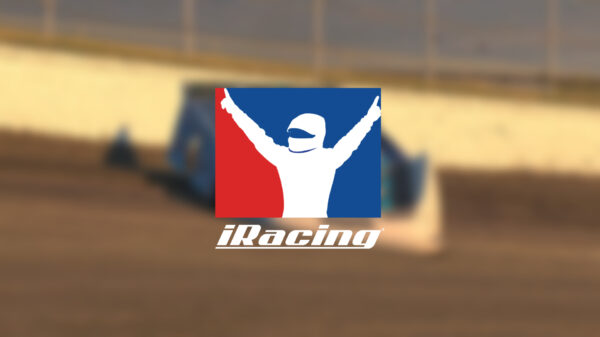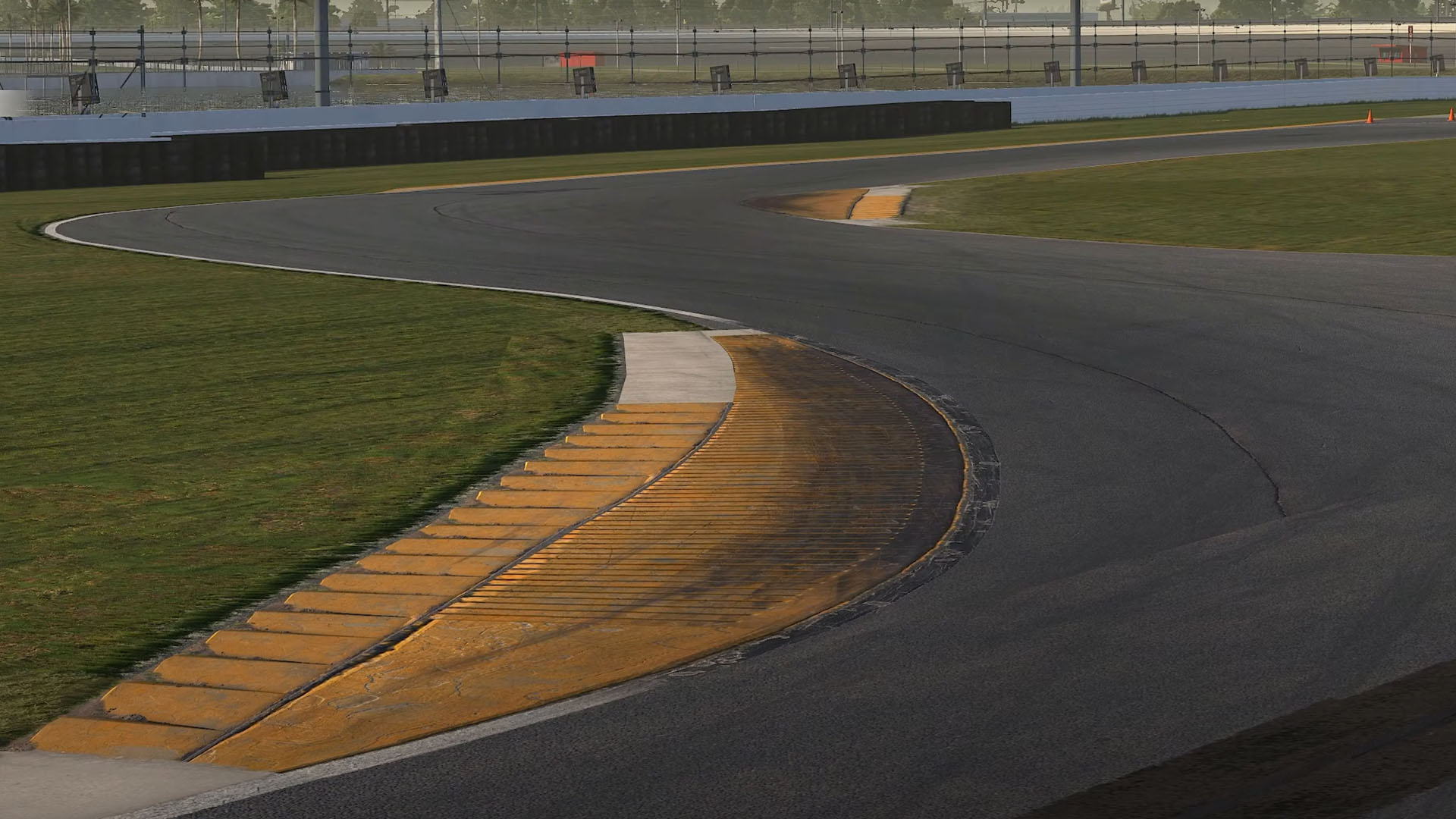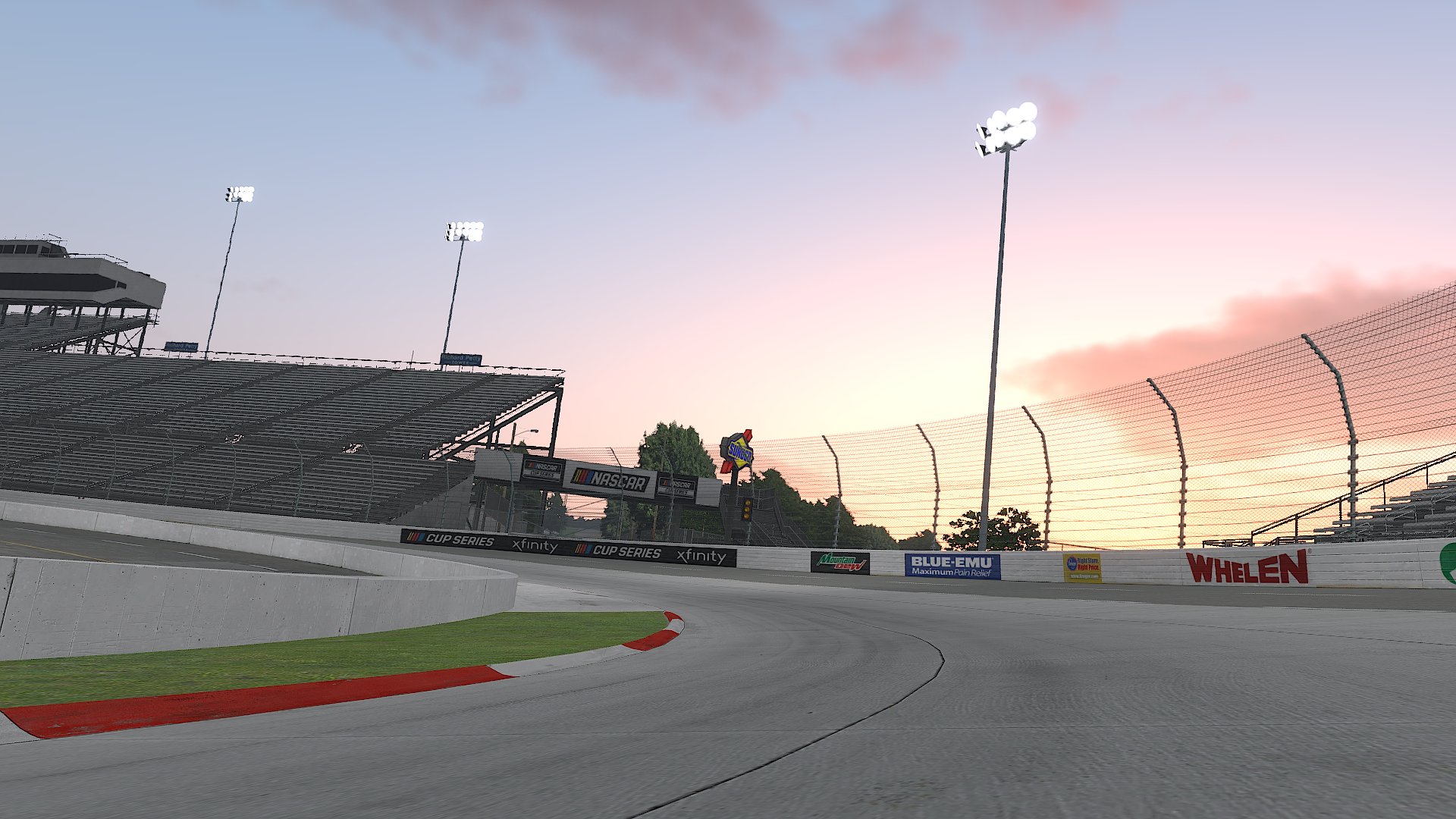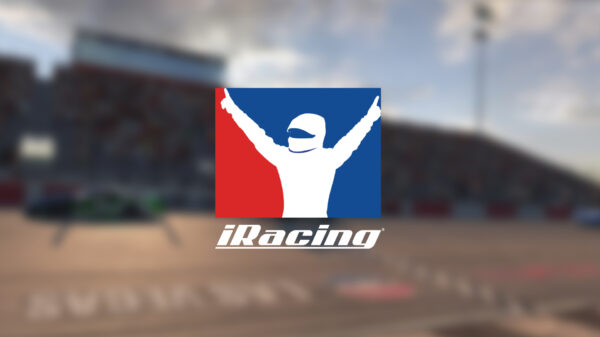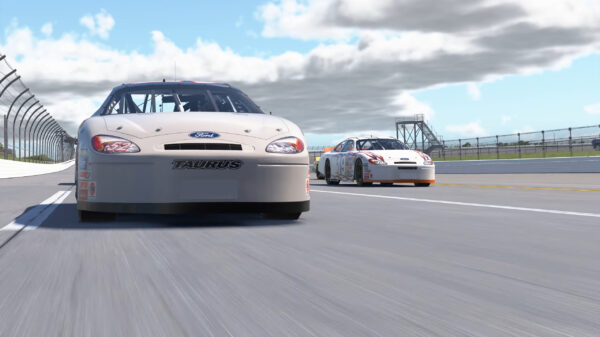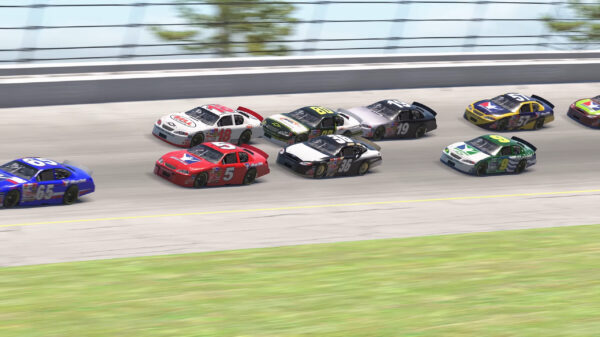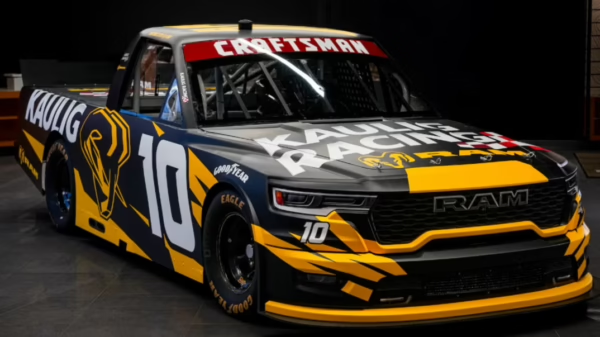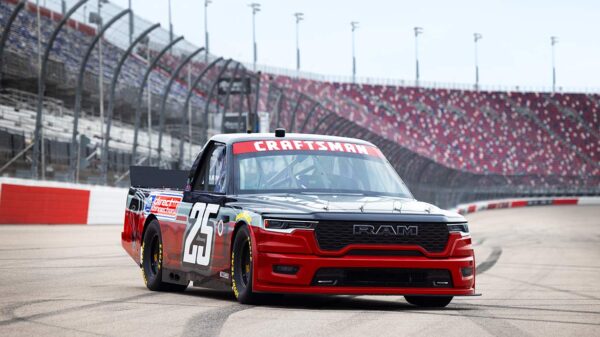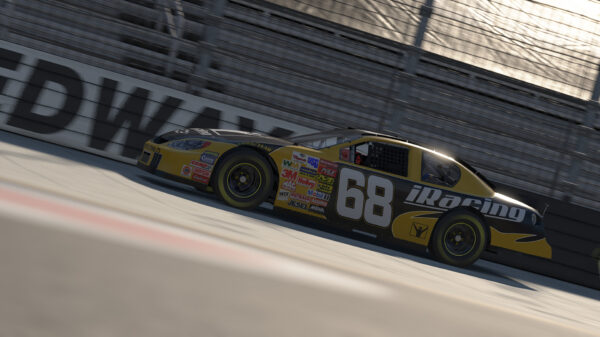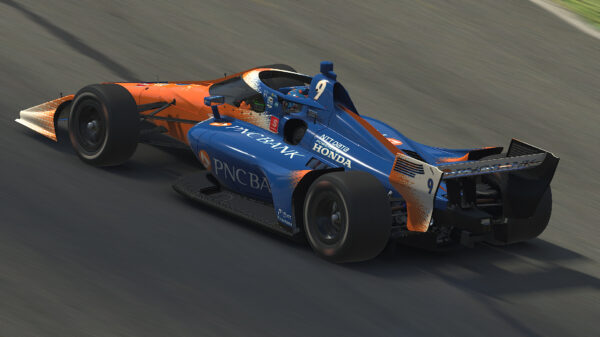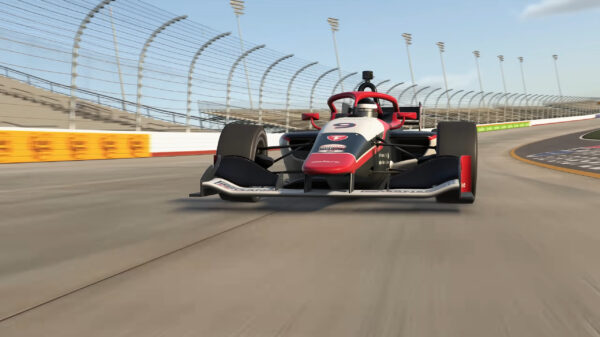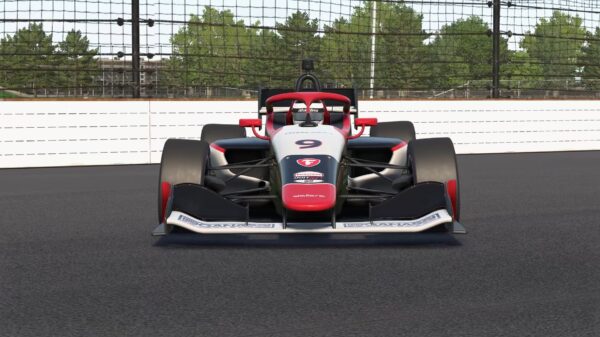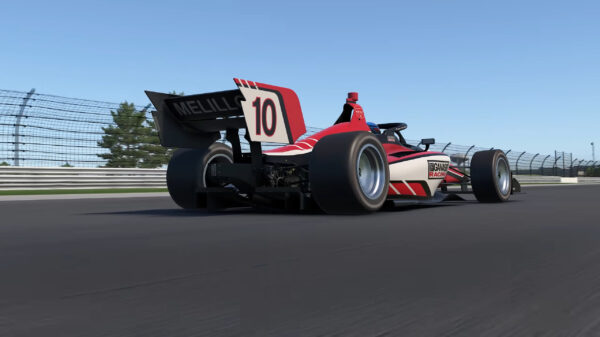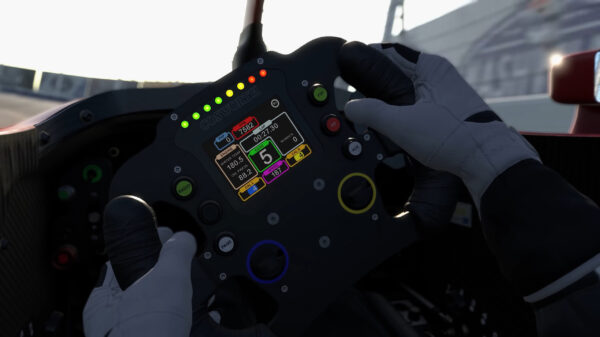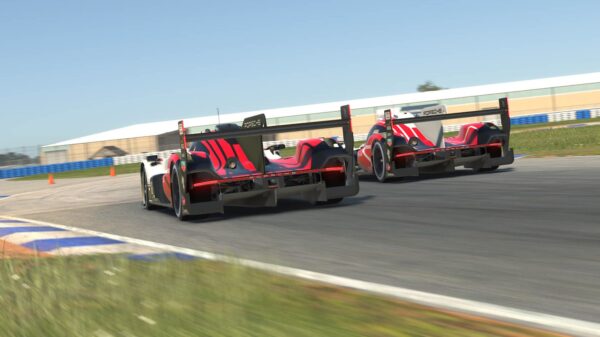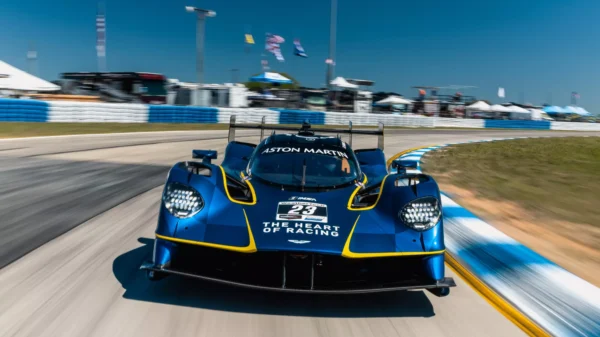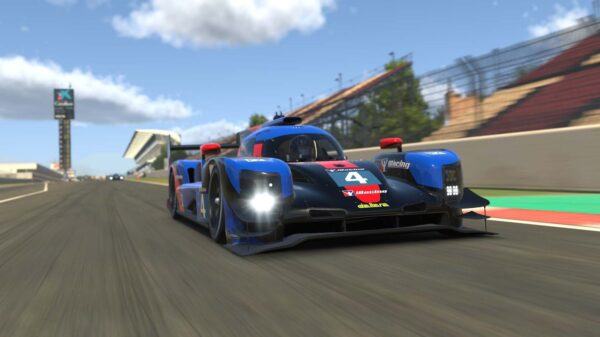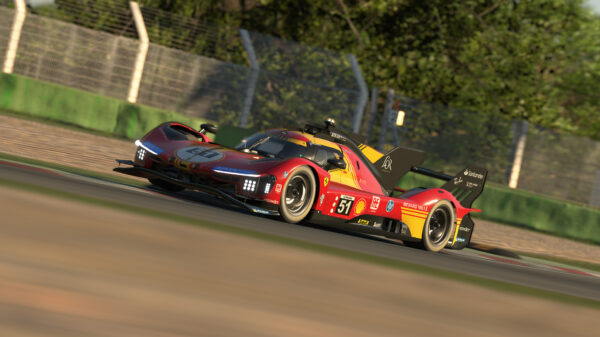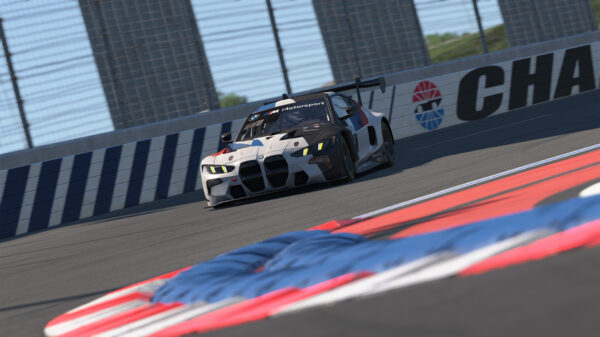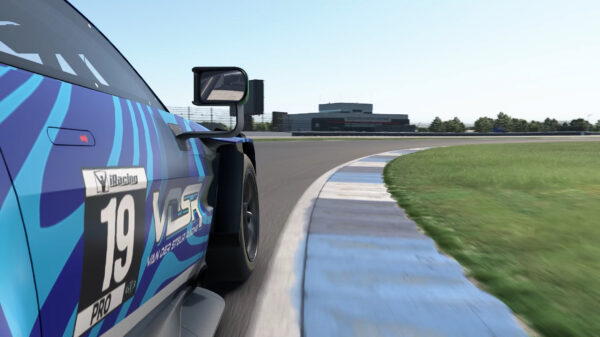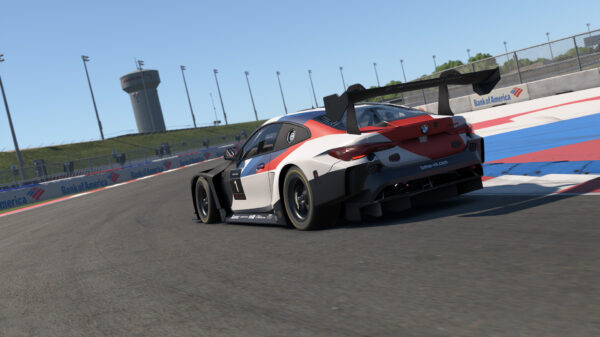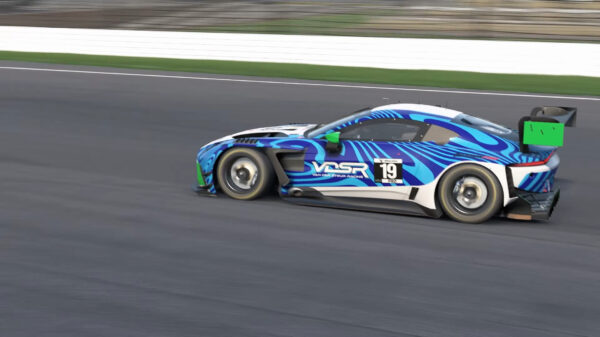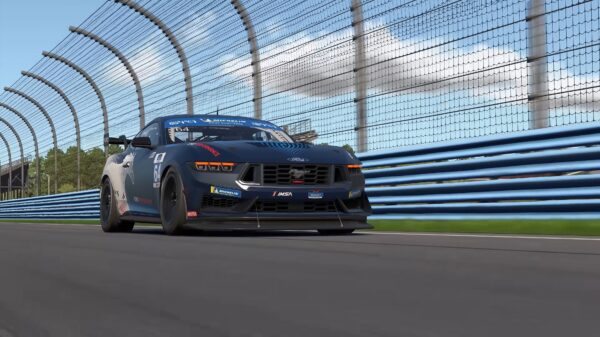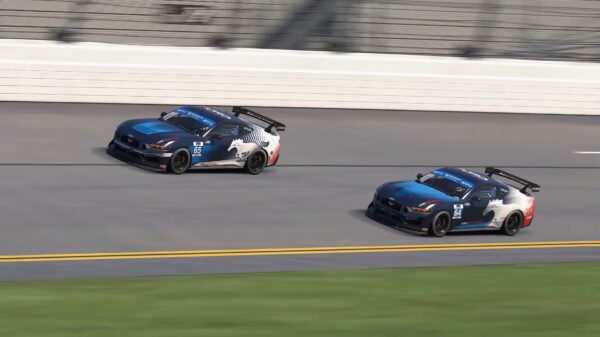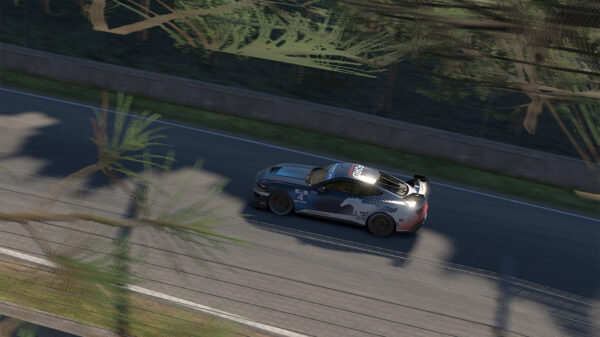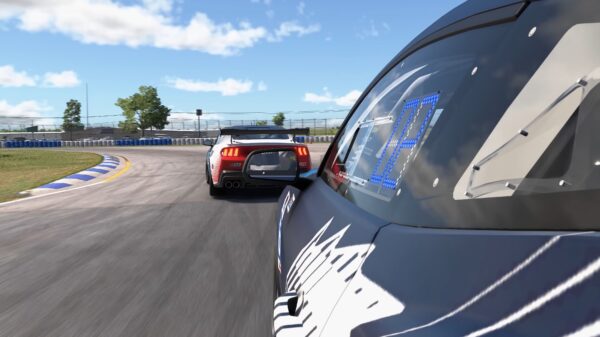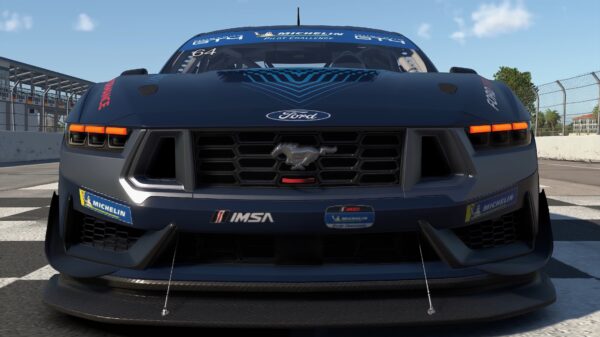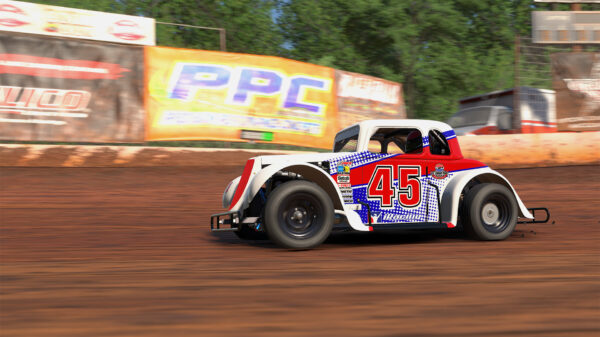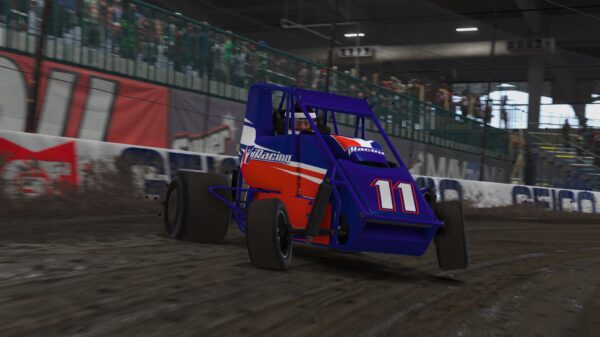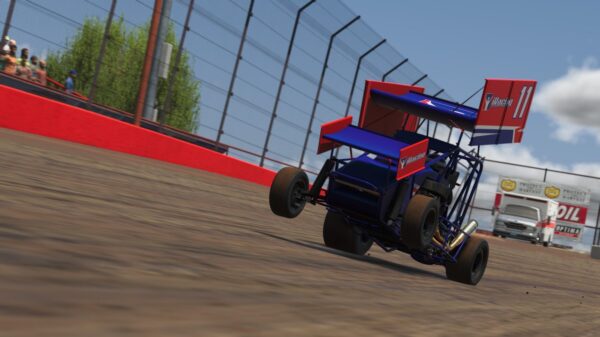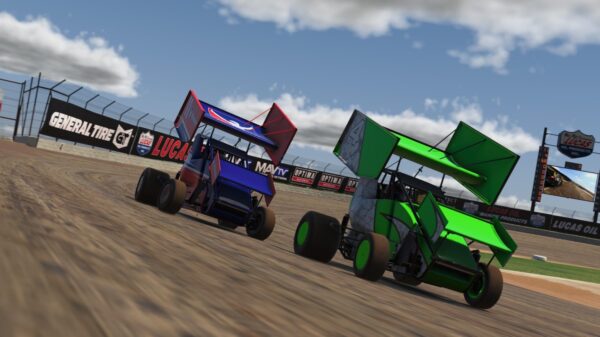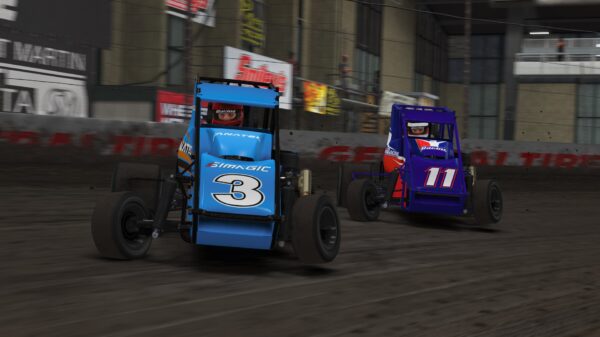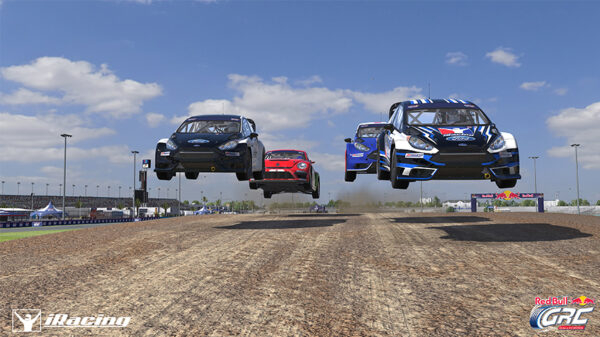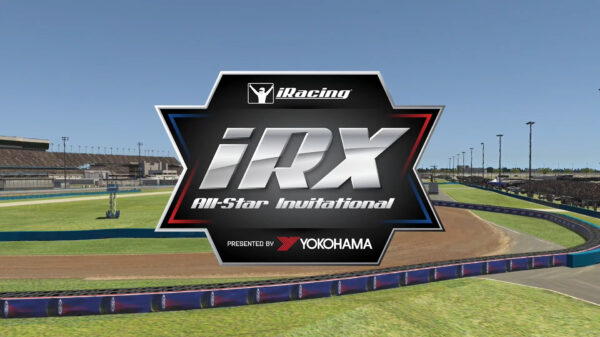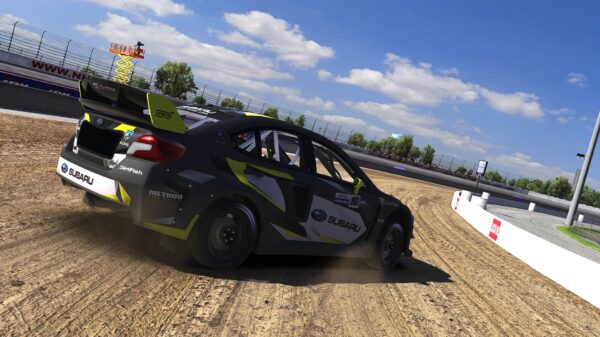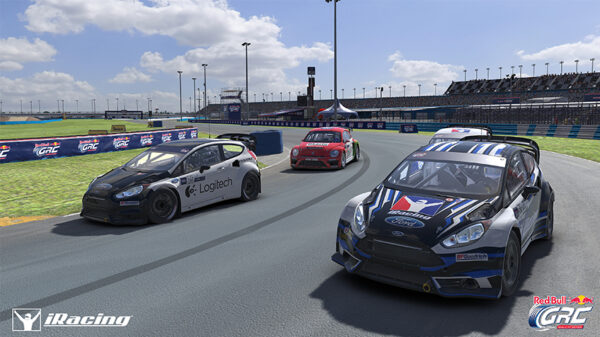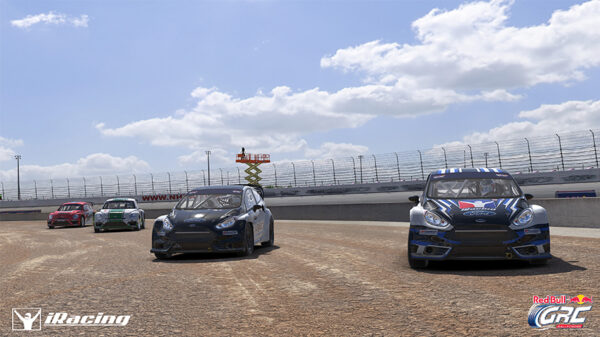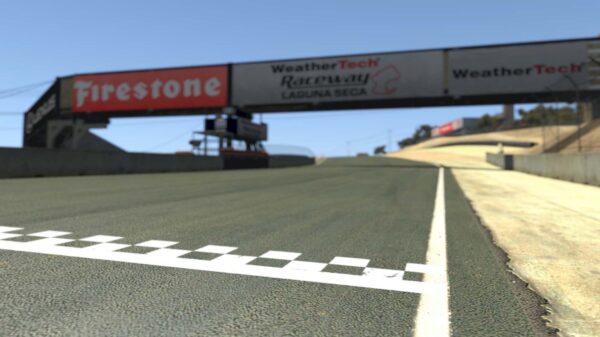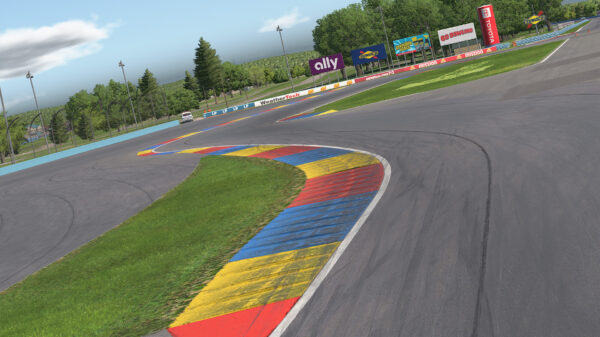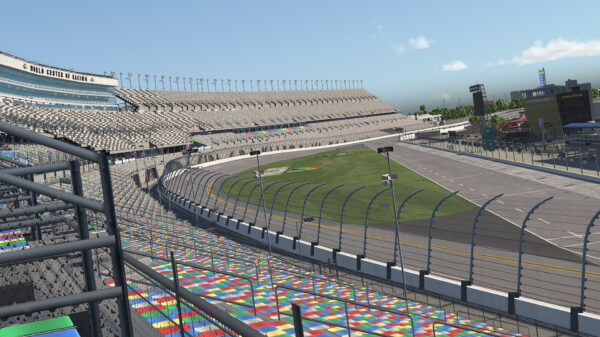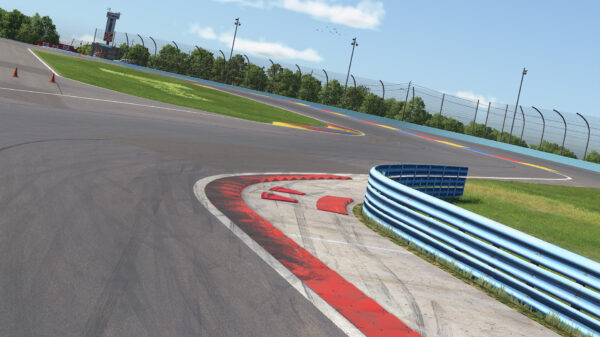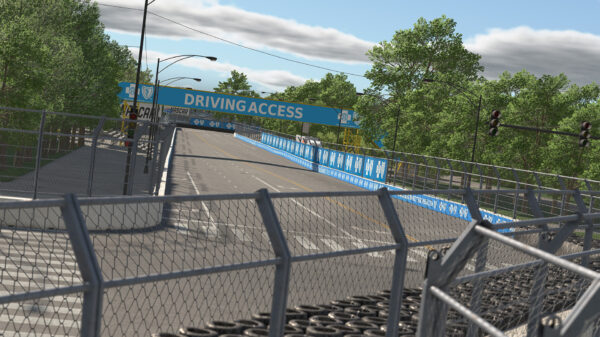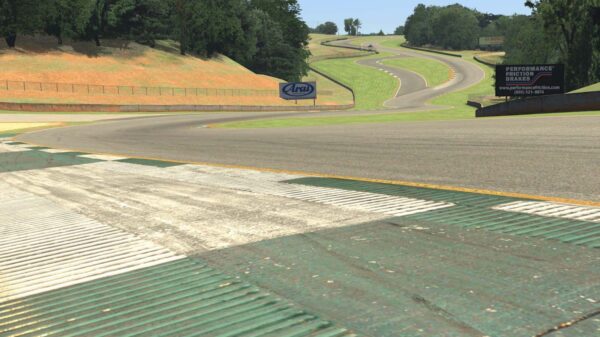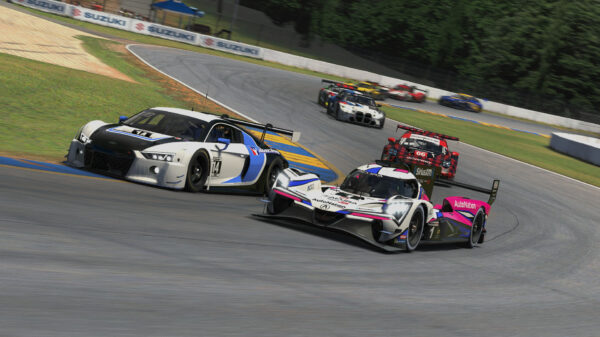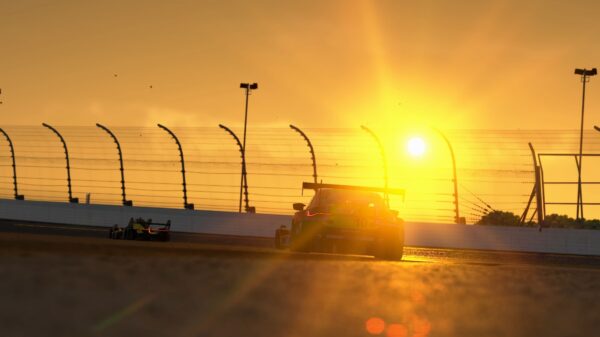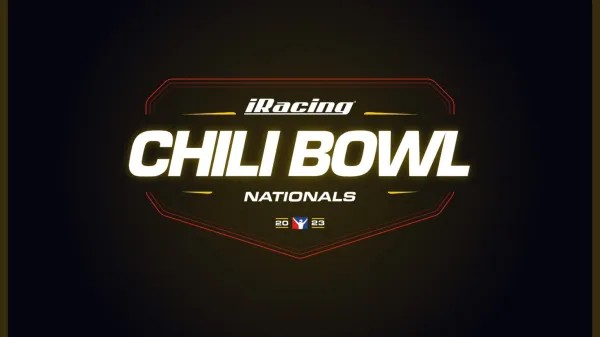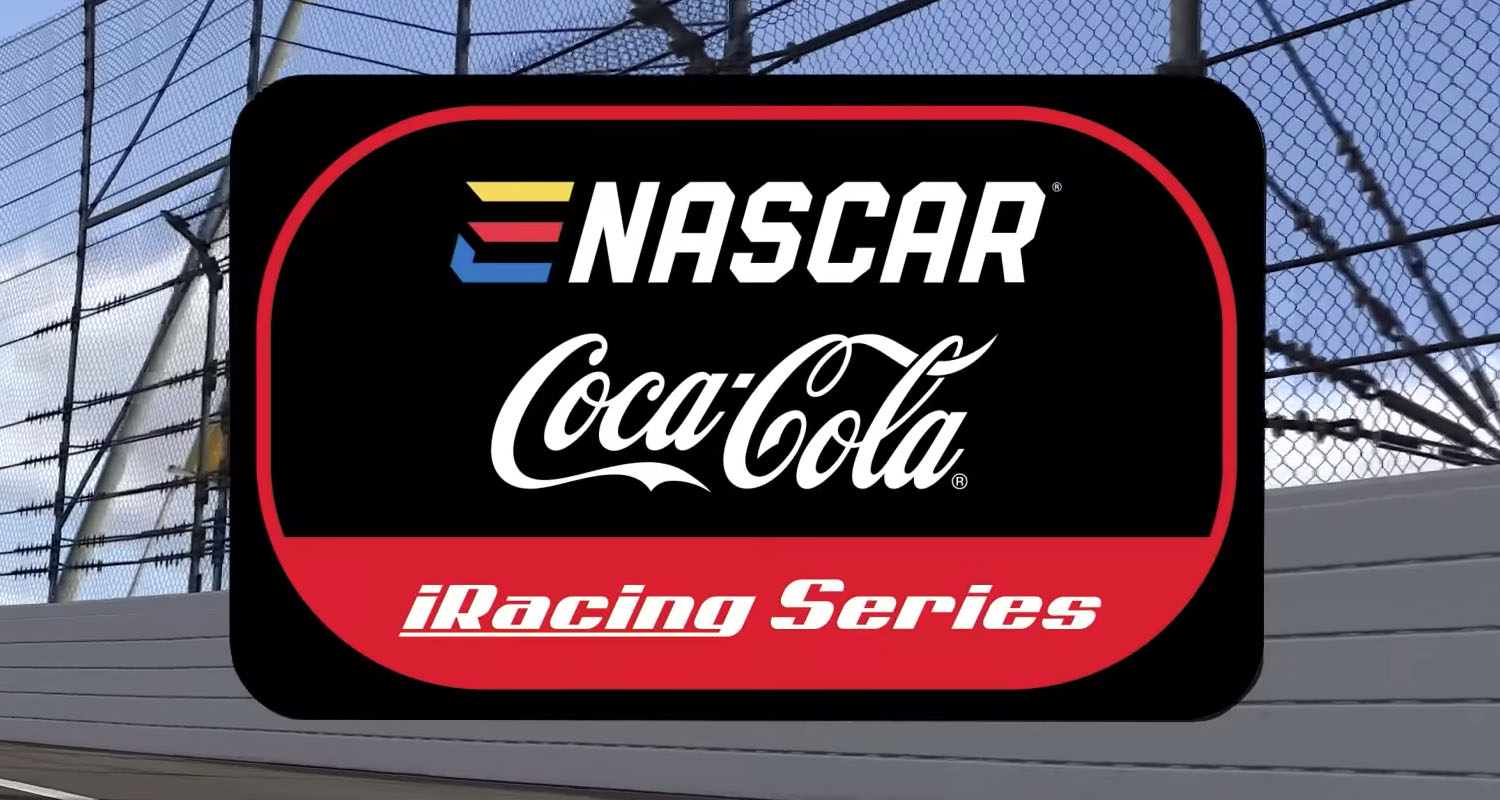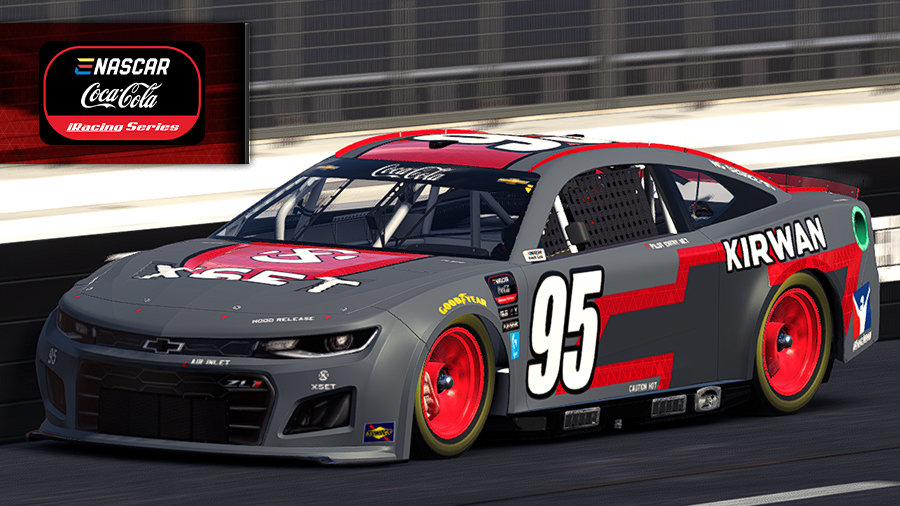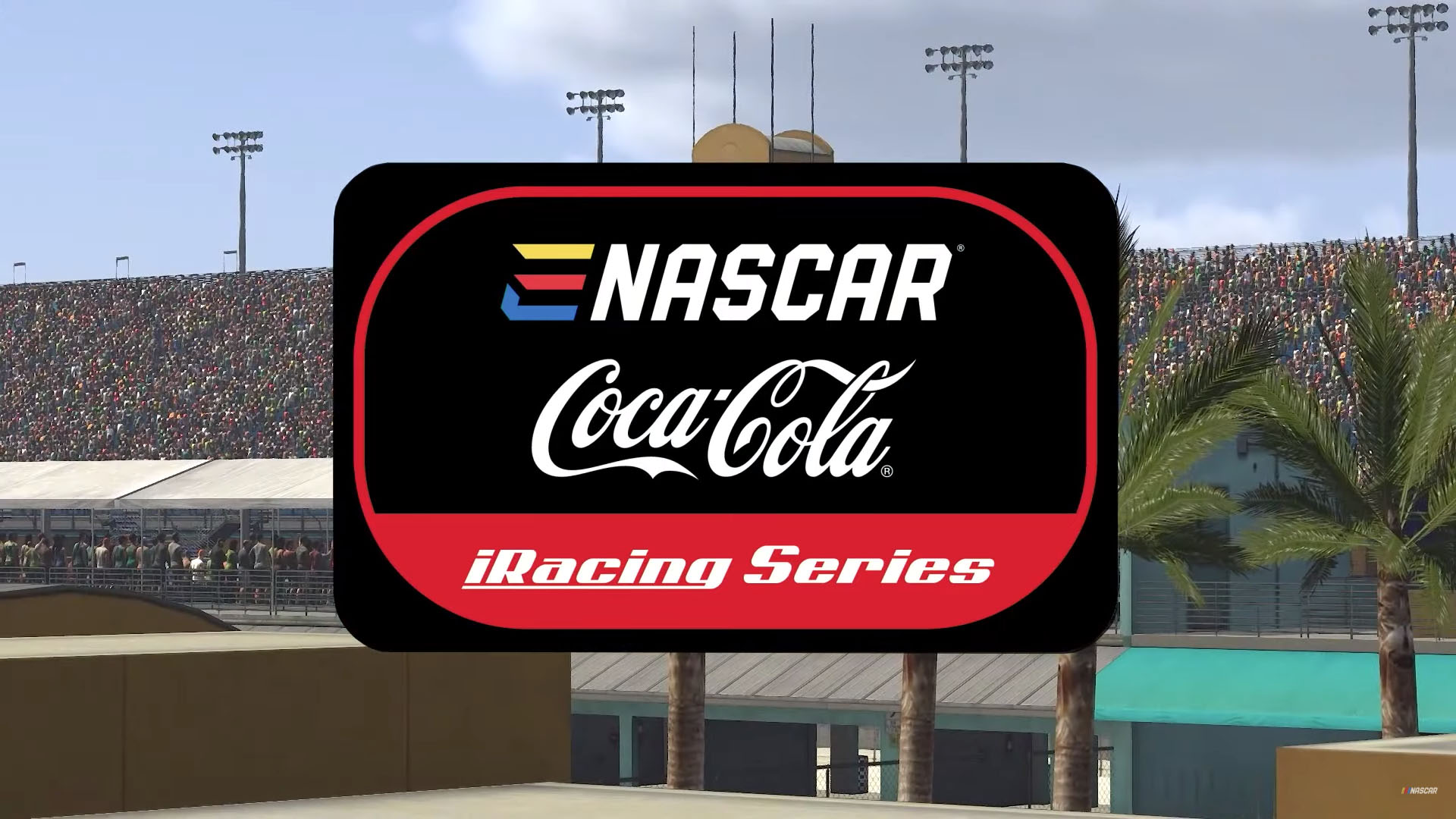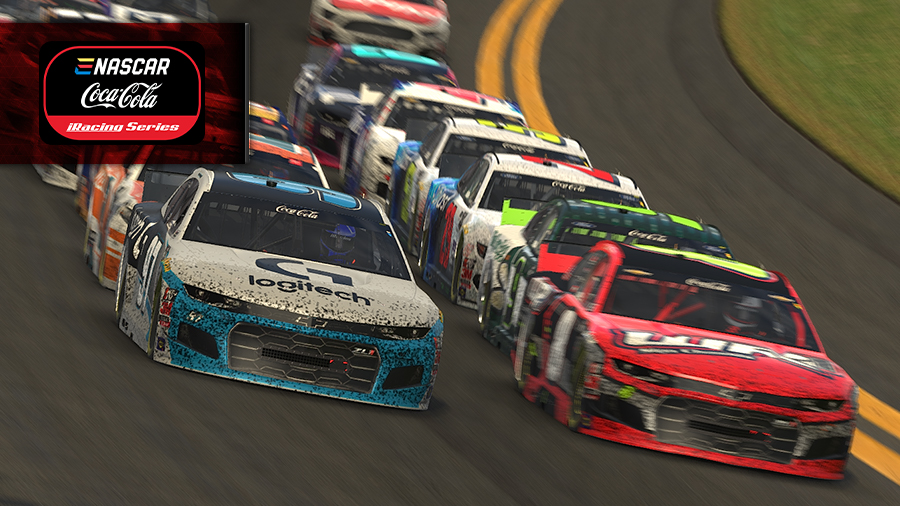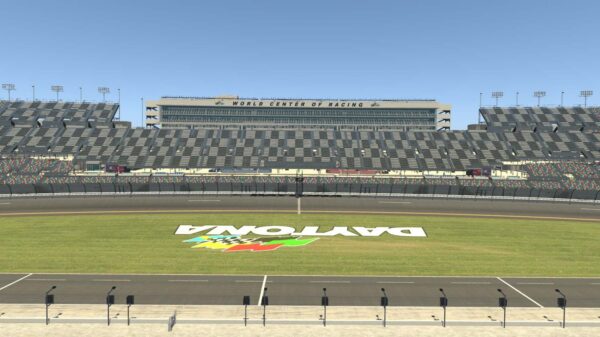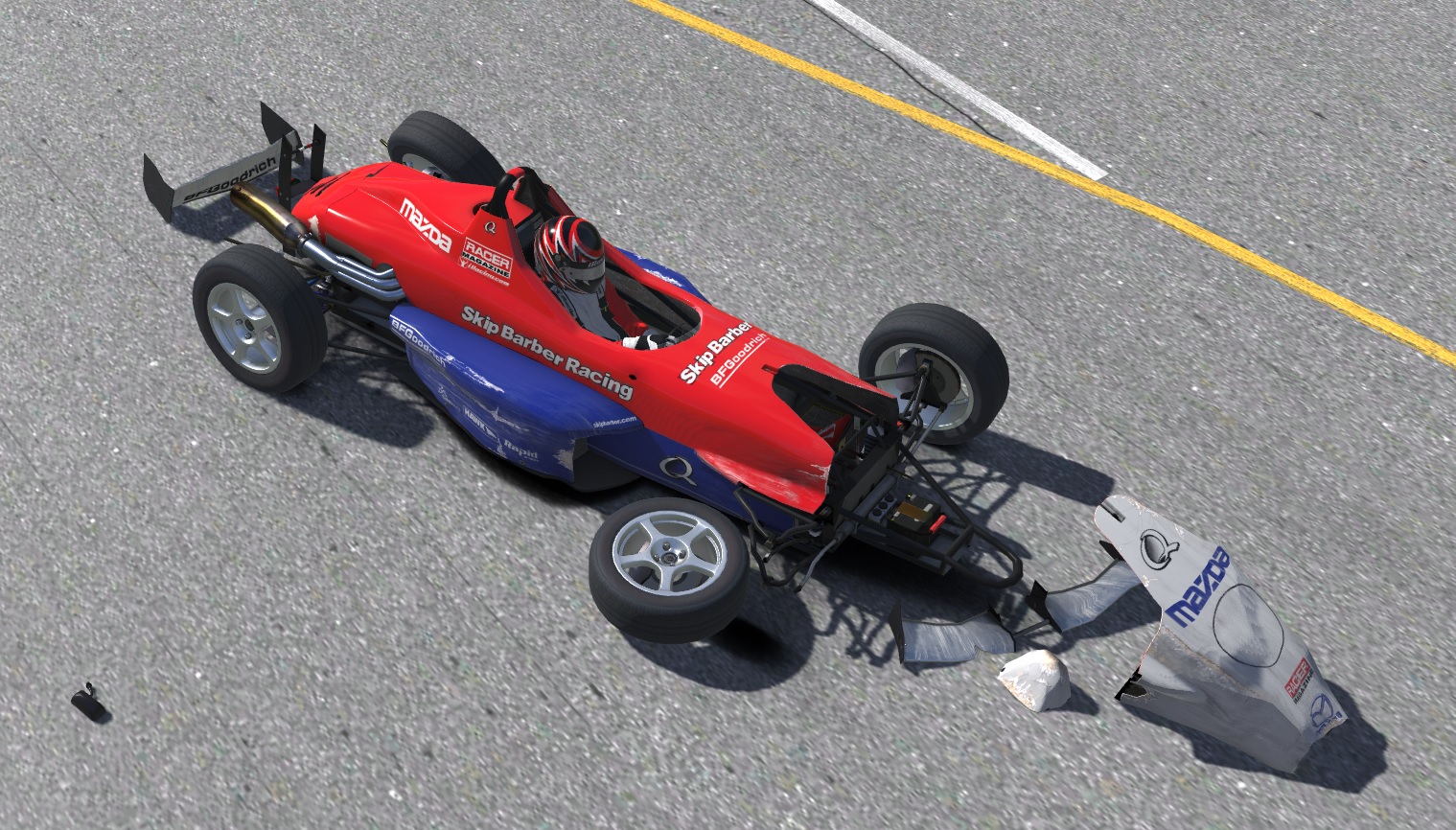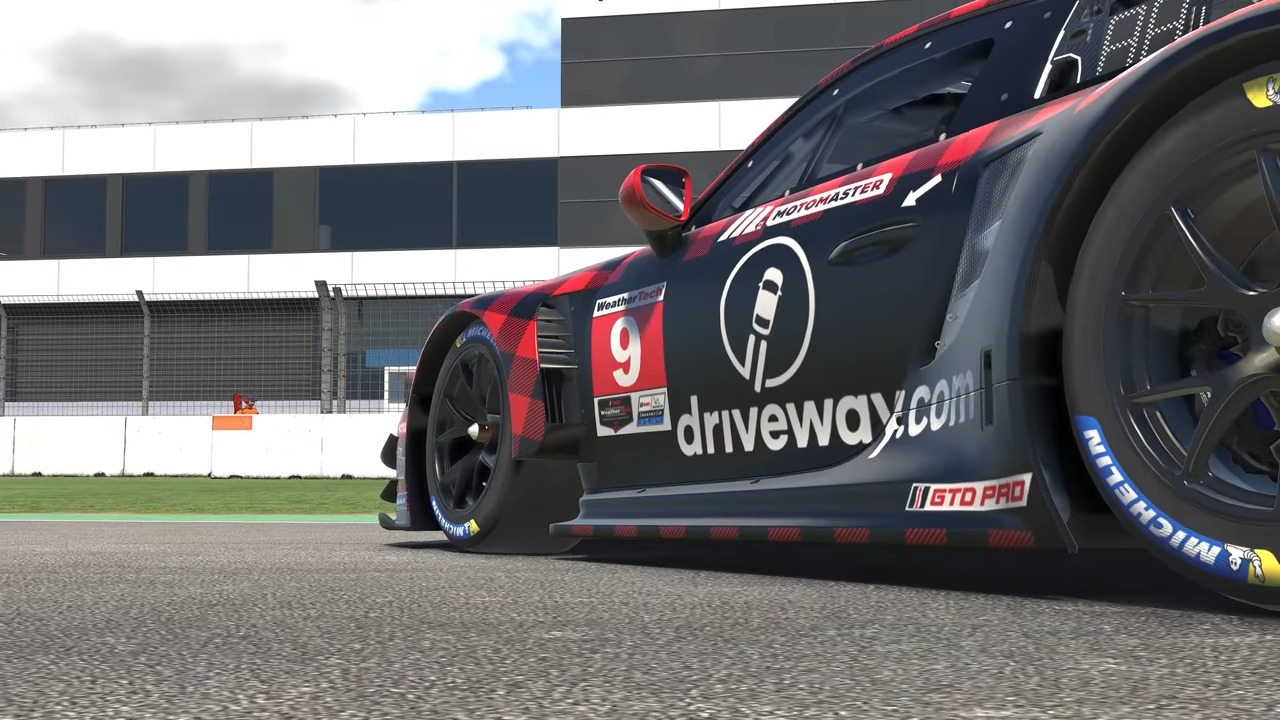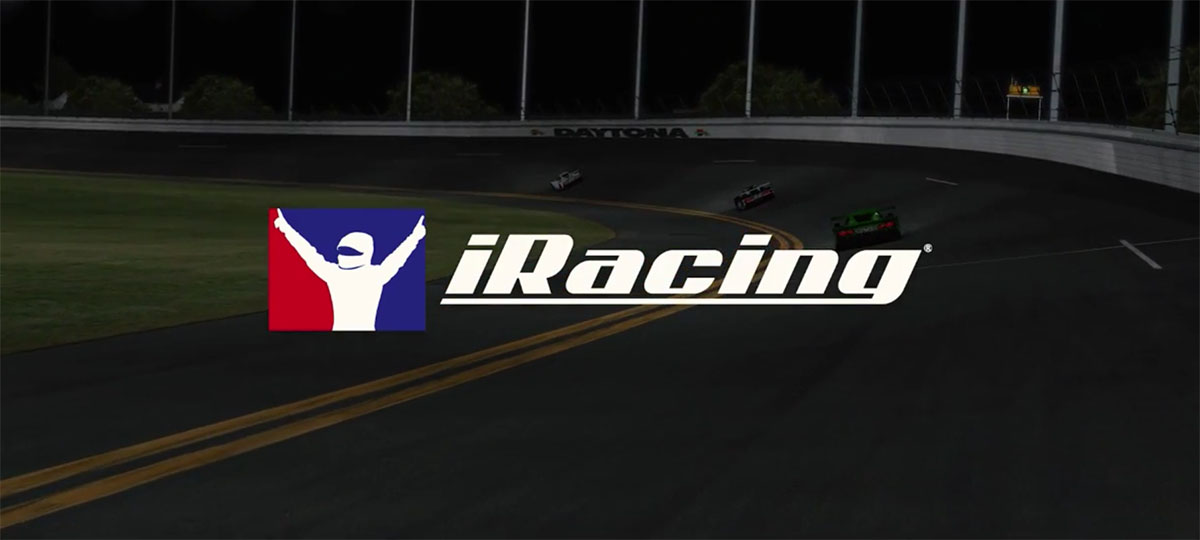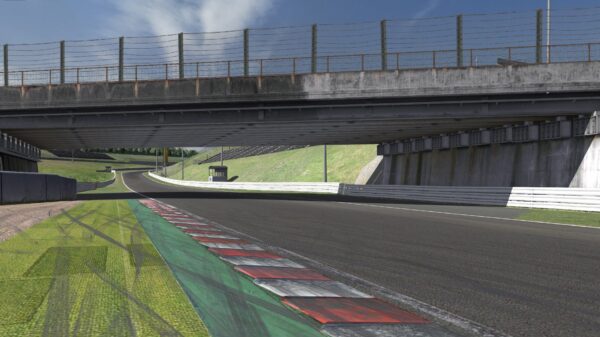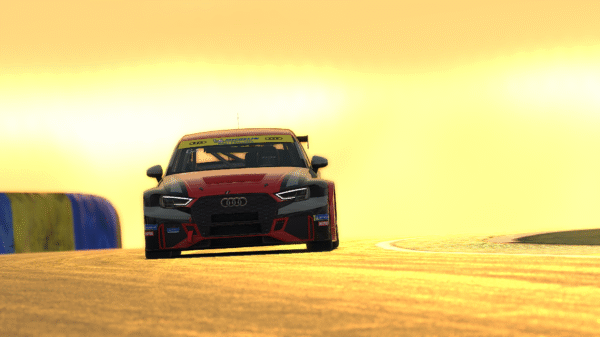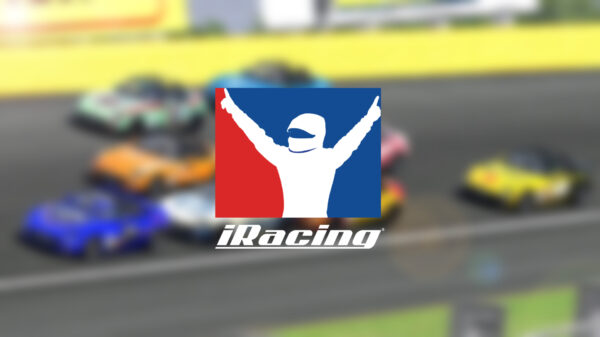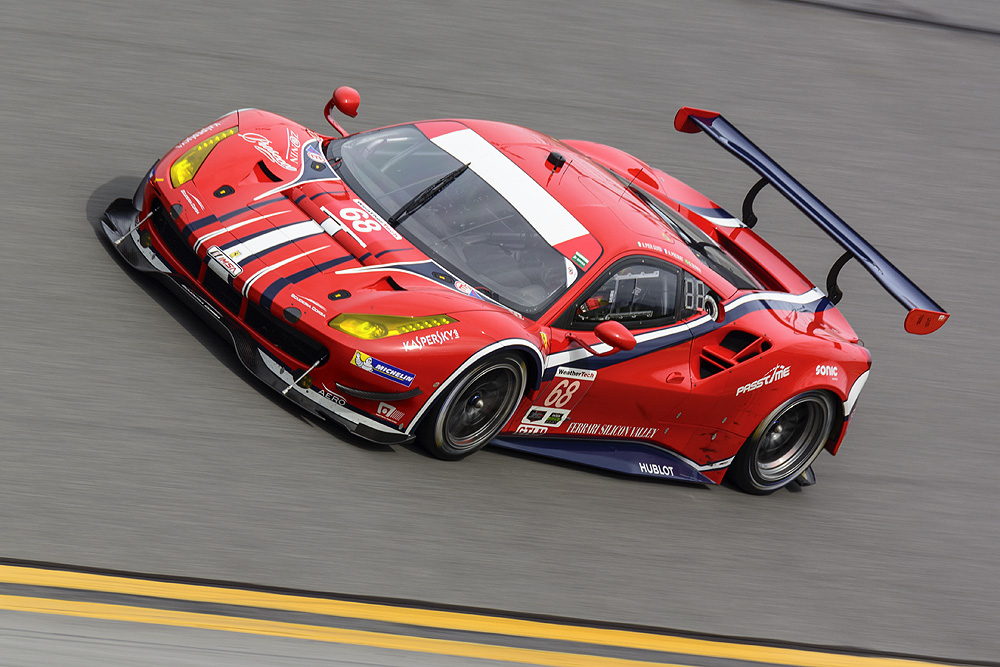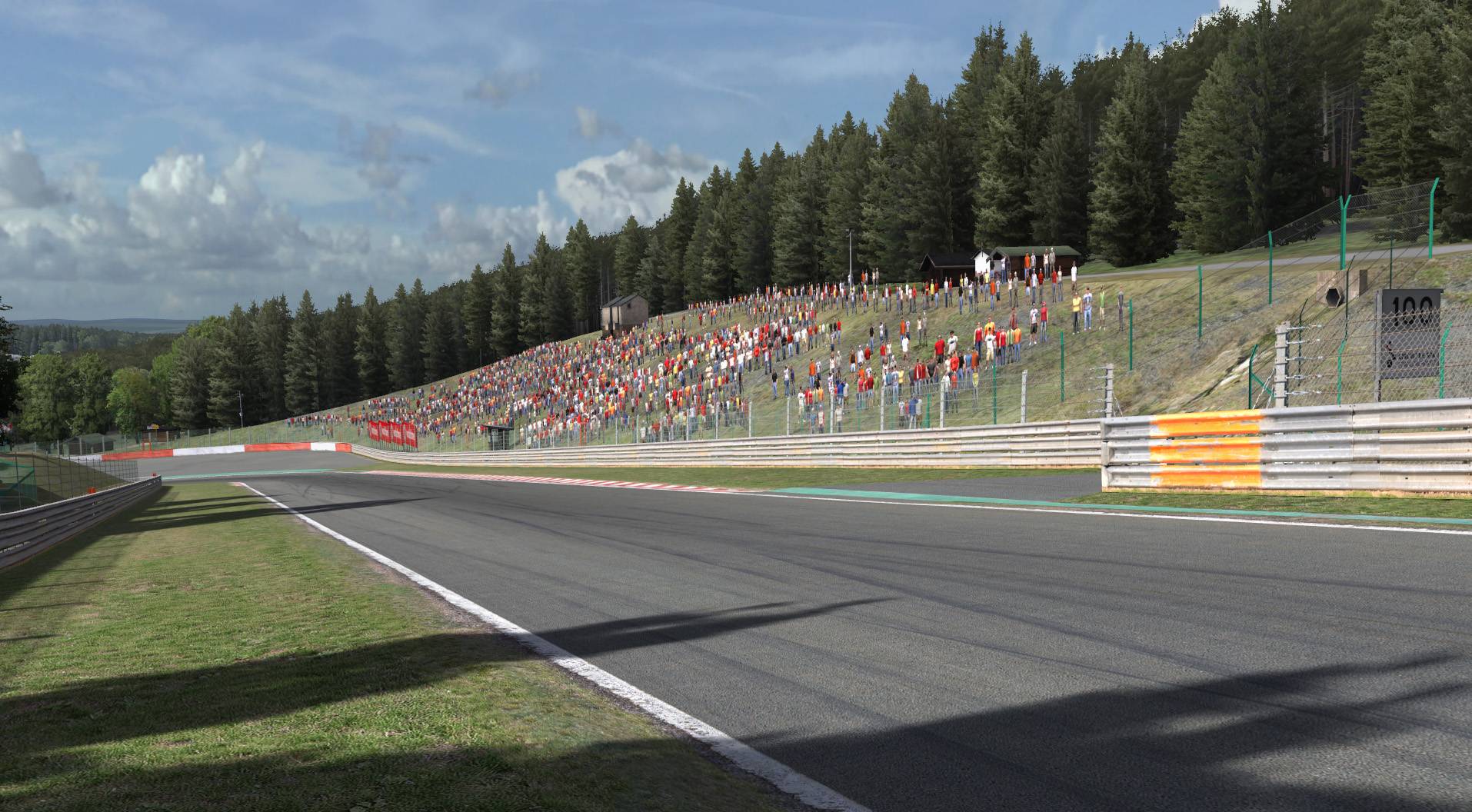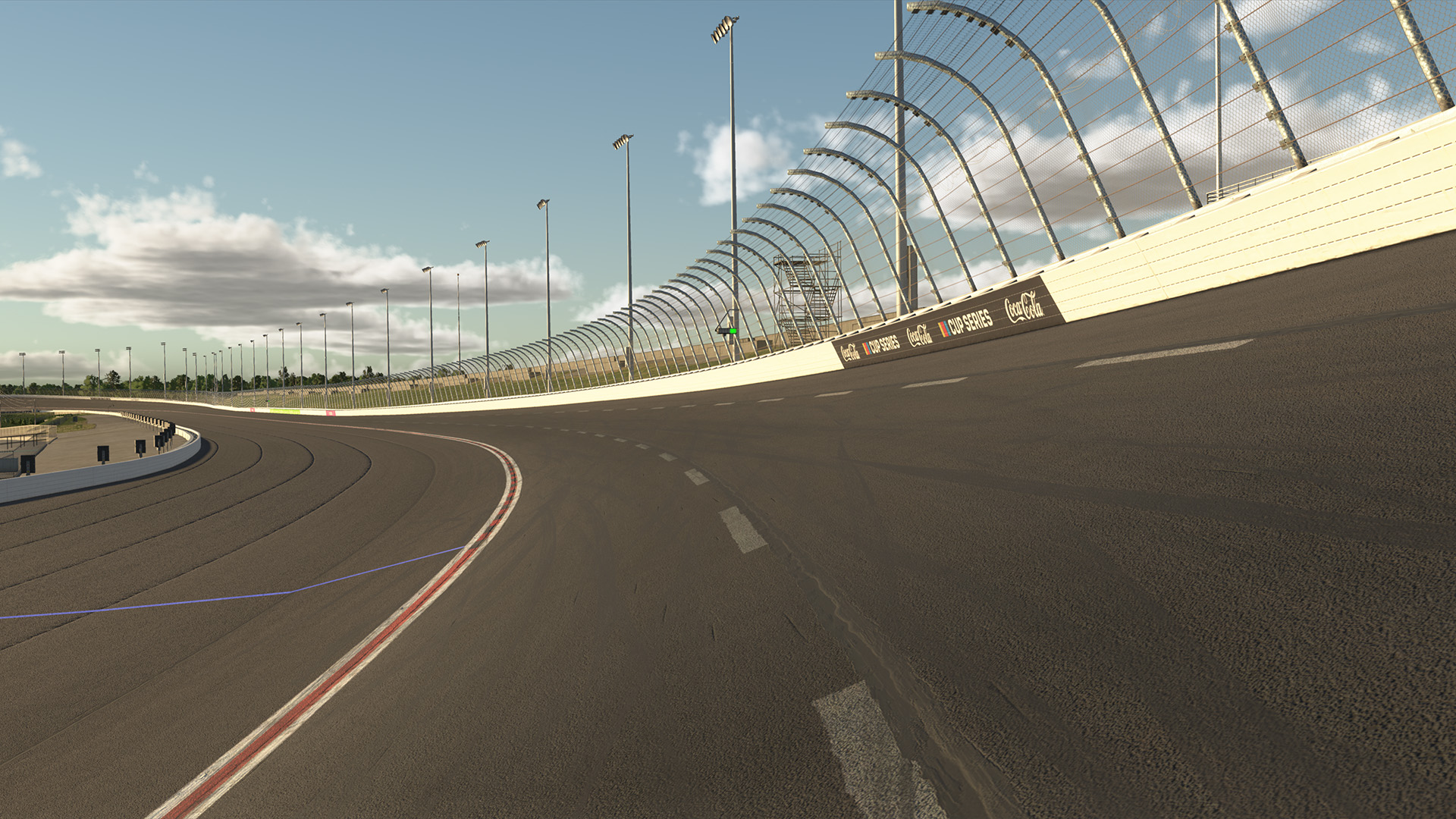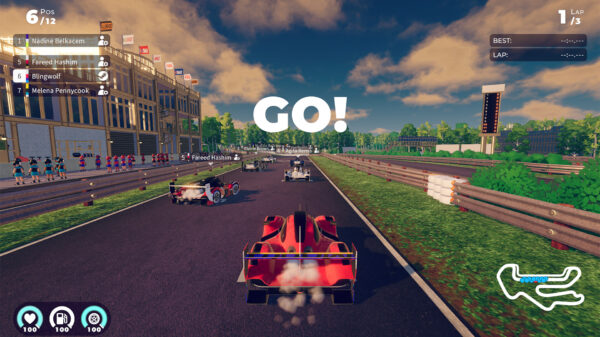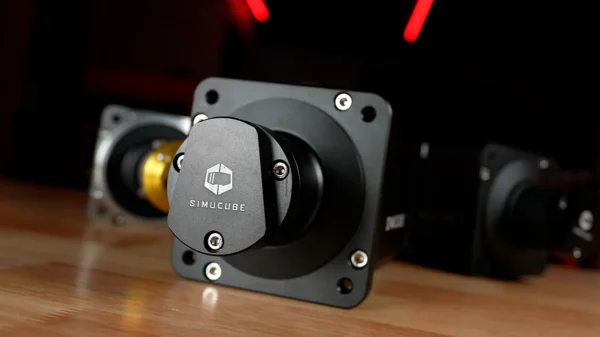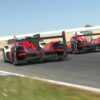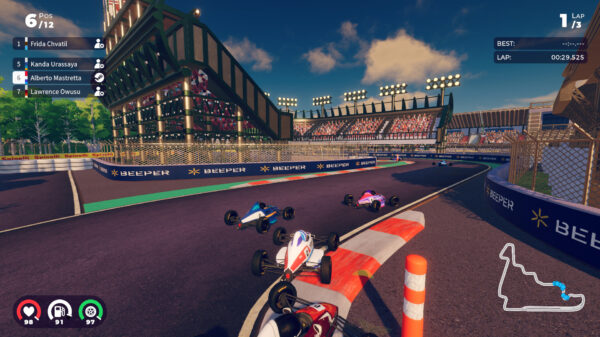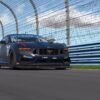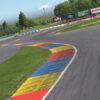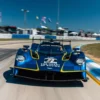EchoPark Speedway, the modern configuration of Atlanta Motor Speedway in iRacing, delivers one of the most unique oval racing experiences on the service. Redesigned to emulate the pack-style racing of Daytona and Talladega, the 1.54-mile oval has transformed from a classic intermediate track into a high-banked, high-speed superspeedway-style venue where drafting, teamwork, and survival instincts define success.
Track Basics
- Length: 1.54 miles / 2.48 km
- Banking: 28 degrees in the turns
- Surface: Asphalt
- Style: Superspeedway-style pack racing
While Atlanta retains its identity as a 1.5-mile oval, the 2022 reconfiguration added dramatically higher banking and a narrower racing groove. The result is a racing environment more comparable to Daytona or Talladega than to intermediate ovals like Texas or Kansas. Cars run in tight packs, drafting is essential, and mistakes can trigger massive multi-car incidents.
The Draft – Your Best Friend and Worst Enemy
Drafting is the lifeblood of racing at EchoPark Speedway. Cars rarely pull away on their own; instead, large packs form quickly, and the draft determines who rises and who fades. Staying in line and working with drafting partners is critical for maintaining position.
But while the draft can slingshot you forward, it can also leave you vulnerable. If you lose the draft or get shuffled out of line, it’s nearly impossible to make up ground alone. Smart drivers anticipate runs, manage pushes, and stay glued to the back bumper of the car ahead.
Patience Pays Off
Unlike shorter tracks or traditional intermediates, where aggression can win early positions, EchoPark demands patience. Races are long, and the likelihood of “the big one” — a massive multi-car crash — is high. Knowing when to push and when to lay back is the difference between being in contention at the end or watching the finish from the garage.
In official iRacing races, this means keeping your nose clean for most of the event. Use the early laps to learn how your car handles in the draft, feel out which lanes are moving, and observe who’s being overly aggressive. Positioning for the final 10–15 laps is where the race is often won.
Line Choice – High vs. Low
Both the high and low lanes can work at EchoPark. The outside lane often builds momentum over longer runs, especially when cars line up in a strong draft. The inside lane, however, can defend positions effectively, particularly on restarts.
Choosing the right lane depends on pack dynamics. In smaller packs, the low line is often more efficient, but in large fields, the high line can carry tremendous momentum. The key is adaptability — knowing when to move and having the patience to wait for openings.
Surviving EchoPark
Success at EchoPark isn’t just about speed — it’s about survival. Multi-car accidents can happen at any moment, especially mid-pack. Maintaining awareness, keeping a steady line, and avoiding sudden moves are critical. Spotter communication is vital here, as you’ll often have cars inches from your door, bumper, or quarter panel.
Many experienced iRacers recommend a two-step approach: survive the first three-quarters of the race, then attack in the closing laps. This strategy minimizes risk while positioning you for the chaotic, fast-paced sprint to the finish.
EchoPark Speedway has quickly earned its reputation as one of iRacing’s most unpredictable and adrenaline-fueled ovals. It takes the intermediate oval formula and transforms it into a superspeedway-style chess match, where drafting strategy, patience, and razor-sharp racecraft decide the outcome.
Drivers who can balance aggression with control, work with the draft, and survive the chaos will find themselves in position to battle for victory when the checkered flag waves.

